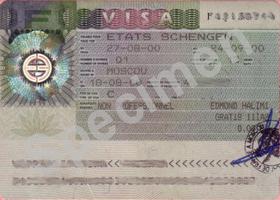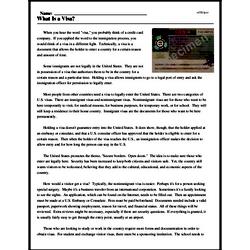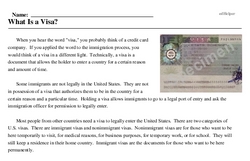What Is a Visa?
When you hear the word "visa," you probably think of a credit card company. If you applied the word to the immigration process, you would think of a visa in a different light. Technically, a visa is a document that allows the holder to enter a country for a certain reason and amount of time.
Some immigrants are not legally in the United States. They are not in possession of a visa that authorizes them to be in the country for a certain reason and a particular time. Holding a visa allows immigrants to go to a legal port of entry and ask the immigration officer for permission to legally enter.
Most people from other countries need a visa to legally enter the United States. There are two categories of U.S. visas. There are immigrant visas and nonimmigrant visas. Nonimmigrant visas are for those who want to be here temporarily to visit, for medical reasons, for business purposes, for temporary work, or for school. They will still keep a residence in their home country. Immigrant visas are the documents for those who want to be here permanently.
Holding a visa doesn't guarantee entry into the United States. It does show, though, that the holder applied at an embassy or consulate, and that a U.S. consular officer has approved that the holder is eligible to enter for a certain reason. Then when the holder of the visa reaches the U.S., an immigration officer makes the decision to allow entry and for how long the person can stay in the U.S.
The United States promotes the theme, "Secure borders. Open doors." The idea is to make sure those who enter are legally here. Security has been increased to keep both citizens and visitors safe. Yet, the country still wants visitors to be welcomed, believing that they add to the cultural, educational, and economic aspects of the country.




